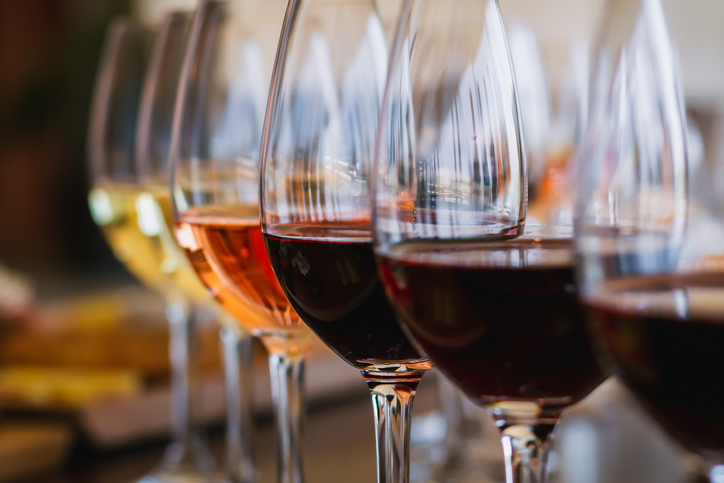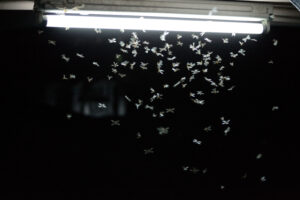Wine is an agricultural product that is uniquely sensitive to variations in climate. Expert tasters can identify the location and year of a bottle based on characteristics imparted by the growing conditions.
As such, wine is also sensitive to climate change, especially in Australia, where many wine regions are on the verge of being too hot to grow quality grapes.
In response to these concerns, Wine Australia and the University of Tasmania initiated a project called Australia’s Wine Future: A Climate Atlas.
Dr Sharon Harvey, senior research and development coordinator at Wine Australia who worked on the project, describes the Climate Atlas as “A longer-term strategic tool that can tell you what your climate in your region looks like on a decadal basis out to 2100 … using the climate indices that are important for wine grape growing.”
Sharon describes the change across all regions as a “consistent trend for higher temperatures and greater aridity”.
As regions get hotter and drier, growers will have to adapt, and it’s hoped that the Climate Atlas will guide their approach.
In the short term, growers can draw on vineyard practices developed over hundreds of years in hotter regions such as Sicily and Sardinia.
In the longer term, there’s an opportunity to replant vineyards with more heat-resilient grape varieties.
HOLY SMOKE!
However, a warming climate isn’t the only threat facing our wine industry.
“Not only does the sector have to try and be resilient to those general climate change attributes but also the increase in climate extremes.”
Sharon says these ‘extremes’ are the increasingly common freak weather events – the heatwaves, floods and, importantly, wildfires.
Fire can pose a threat to vineyards even if they are tens of kilometres away by causing a fault known as ‘smoke taint’.

SOUR (SMOKED) GRAPES
Smoke taint, first reported by the Australian Wine Research Institute (AWRI) in 2003, is the result of grapes being exposed to smoke, whether from bushfires or prescribed burns at any time throughout the growing season.
The taste of smoke taint has been described by taste-testers as “smoky bacon,” “faecal” or “plasticky”. Some have even described it as an unpleasant ashy aftertaste that’s “like licking an ashtray”.
Dr Mango Parker, a senior research scientist at the AWRI in Adelaide, is an expert on the subject.
Mango says that smoke is “made up of a complex mixture of solid particles, volatile phenols, gases, and moisture”. Volatile phenols are a type of organic compound responsible for giving smoke its characteristic smell.
When smoke lands on the skin of a grape, these volatile phenols are quickly taken up into the grape, and then metabolised, getting bound up with sugars to form larger molecules called glycosides.
These glycosides can break apart either during fermentation in the wine bottle over time or with the assistance of the bacteria in your mouth. This can release unpleasant smoky flavours and possibly ruin your wine.
Unfortunately, smoke taint can’t be removed from affected grapes. So if the level of smoky molecules is too high, the grapes are unable to be made into wine.
“It’s actually quite upsetting for us when we have enquiries from producers who are worried that they’ve potentially lost an entire year’s production from something that’s completely out of their control,” says Mango.
A BURNING DESIRE
Climate change increases the risk of smoke taint in two ways. As well as creating more wildfires, warmer climates mean grapevines will flower and set fruit earlier in the spring – when prescribed burns can occur.
Mango sees hope in better communications with local governments.
“It’s important for the wine industry to be involved in the conversations with the other stakeholders in managing how and when those controlled burns occur.”
By factoring in the locations of vineyards as well as wind conditions, prescribed burns can be done without blowing smoke over vineyards and causing preventable smoke taint.
WHERE THERE’S SMOKE …
Perhaps necessitated by our climate, Australia is a world leader in smoke taint research, and the AWRI provides analysis and support to hundreds of growers and winemakers every year. From testing grapes, it’s now possible to identify the risk of smoke taint developing in the final wine, so producers can decide if it’s worth picking their grapes and investing in winemaking.
“The whole industry knows that bushfires and smoke pose a big risk going into the future,” says Mango.
“And what we’re trying to do at the AWRI is get the evidence and the science there so that the industry can manage the risk and be resilient to climate change factors going forwards.”

Interested in learning more about fire and its impact on the people and environment of Western Australia? Tune into the second season of the Elements podcast.
Across five episodes, we cover everything from festival bonfires to devastating wildfires, from echoes of ancient knowledge to the technological possibilities of the future. It’s going to be lit🔥
All episodes out now on all your favourite podcast platforms.








